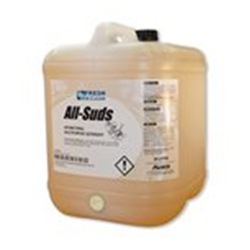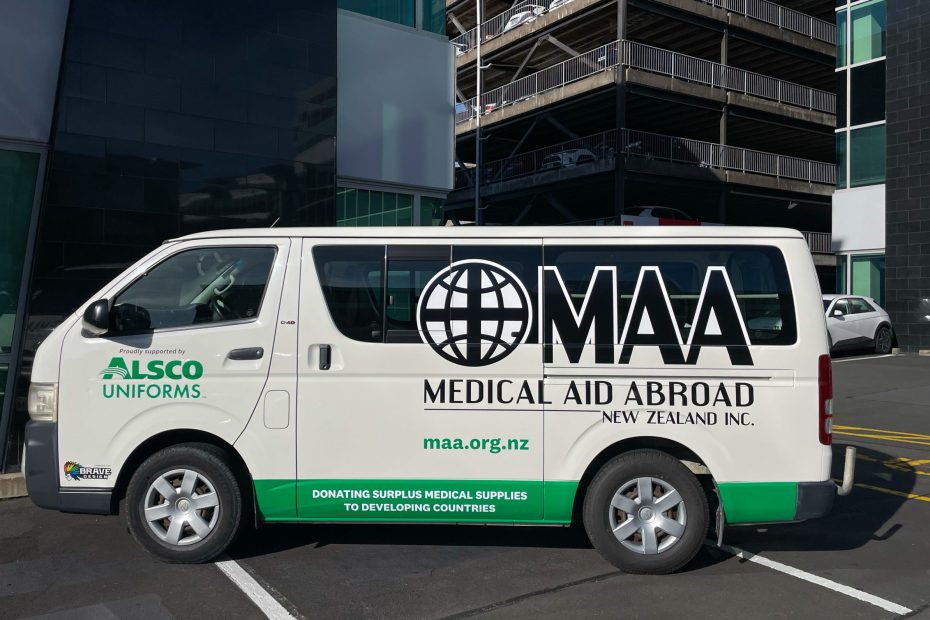Did you know your restaurant kitchen may look clean but still have germs lurking in it?
A restaurant kitchen is an ideal breeding ground for various types of bacteria.
This is because food leftovers can spill from visible areas to germ hot spots. These germ danger zones usually go unnoticed during cleaning.
A dirty kitchen area also invites pests that spread contaminants to restaurant utensils. In turn, your business may face “dire consequences” due to complaining customers.
You don’t want your customers or staff to get sick due to a poorly maintained kitchen. That said, here are the seven hottest germ hot spots in your restaurant’s kitchen.
The Food Preparation Table And Countertop
Kitchen countertops are the workhorse of any restaurant. But they are also one of the dirtiest areas.
You may wonder how this is even possible when your staff always cleans them. It turns out; you need more than just wiping down these areas.
The reality is that many food preparation tables and countertop material are porous.
And germs can flourish on such porous surfaces because they find exactly what they need:
- Food
- Comfortable temperature
- moisture
According to a CBS News report, 18 per cent of kitchen countertops have mould while 32 per cent harbour coliform bacteria.
Some typical example of coliform bacteria include:
- E-coli
- Salmonella
How To Disinfect Your Food Preparation Tables And Countertops
Wiping down your restaurant kitchen surface isn’t enough to kill germs. Here is how you should disinfect these surfaces:
- Use a paper towel or microfiber cloth to wipe away visible debris and crumbs on the table.
- Mix hot water and Auto-Dish Washing Liquid in a basin.
- Saturate a paper towel with the soapy solution and carefully wipe the countertop.
- Once the table is clean, use Fresh & Clean Challenge to clean and disinfect the surface.
- Let the disinfectant air-dry for at least 10 minutes.
- After the surface has dried, rinse it with fresh water.
The Chopping Board

Did you know that chopping boards are 200 times dirtier than your toilet seat?
Although you may be washing these boards after every use, this doesn’t protect you from all types of germs.
This is because chopping boards easily transfer bacteria from raw meat, fruits and vegetables to other surfaces.
The types of germs that thrive on these boards include:
- Coliform bacteria
- Yeast
- Mould
How To Disinfect Your Chopping Boards
- Place the chopping board in a clean and empty sink.
- Run hot water over its surface to remove any food particles.
- Soak a clean cloth in hydrogen peroxide or vinegar.
- Wipe the chopping board with a cloth and leave it for a few minutes.
- Rinse the board with hot, clean water.
Note that you can also use bicarbonate of soda to deodorize the board before using vinegar.
The Kitchen Sink
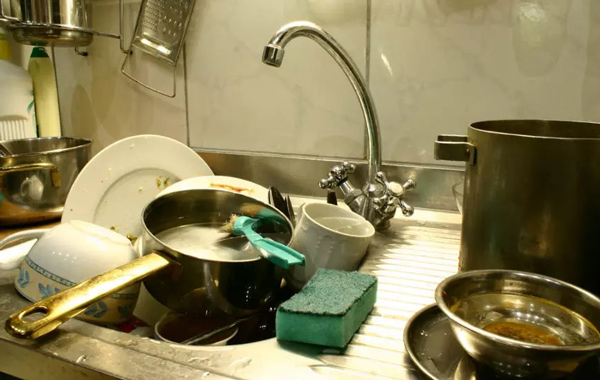
Your kitchen sink gets contaminated with germs when you wash raw foods in it. Additionally, sponges, mops and cloths rinsed in the sink contribute to its contamination.
Some common germs you can find on your kitchen sink include:
- Coliform bacteria
- Mould
How To Disinfect Your Kitchen Sink
- Clear the sink of any items like dishes and food scraps.
- Run water to remove any visible crumbs.
- Mix some warm water and dishwashing soap.
- Dip a sponge in the solution and scrub the entire sink basin.
- Use baking soda to remove sticky stains if the dishwashing solution isn’t effective.
- Rinse the sink with clean water and wipe it dry using a microfiber cloth.
The Garbage Disposal
The garbage disposal unit collects germs from various types of raw food. This includes spinach, chicken or eggs that are filled with bacteria.
While you may manage to keep your garbage disposal always smelling fresh, it’s quite hard to keep it absolutely bacteria-free. The most common type of bacteria that thrive in the disposal is salmonella bacteria.
How To Disinfect Your Garbage Disposal
- Turn off the disposal.
- Apply Auto-Dish Washing Liquid to an abrasive sponge.
- Use the sponge to scrub its baffle thoroughly (frequently rinse the sponge to remove any gunk).
- Use the sponge to wipe down the top of the grinding chamber (repeat until there is no gunk).
- Pour about half a cup of baking soda into the unit followed by vinegar.
- Cover the drain opening for some minutes. This traps the fizzing caused by the mixture of vinegar and baking soda.
- Remove the stopper and use hot water to flush the disposal.
Scrubbers And Sponges
Ironically, your kitchen scrubbers or sponges, that you use to keep other items clean, maybe the dirtiest. A study on microbiome shows that scrubbers and sponges that are regularly washed using soapy water harbour a lot of bacteria.
Understanding how to keep them germ-free and clean can increase their lifespan as well as reduce the spread of bacteria.
Germs that thrive in sponges
- Salmonella
- E.coli
- Staphylococcus
- Moraxella osloensis
How To Disinfect The Scrubbers And Sponges In Your Restaurant’s Kitchen
- Fill a basin or your kitchen sink with a gallon of water.
- Add ¾ cups of Fresh & Clean Triple-X bleach.
- Soak your scrubber or sponge in the sink and wait for a few minutes.
- Remove the sponge, and it’s now ready for use.
The Refrigerator
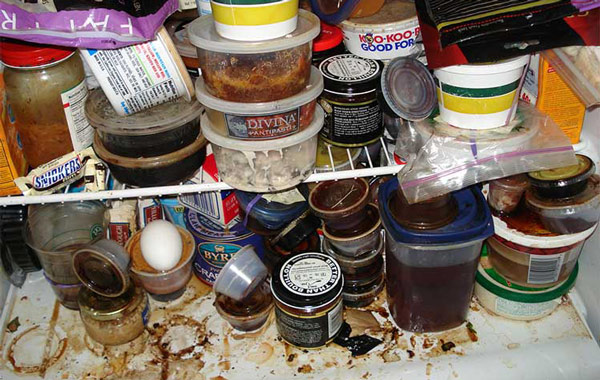
Why do some food products go bad even after being stored in a refrigerator?
According to Which?, Seven in every ten refrigerators harbour harmful bacteria. Even though refrigerators slow down microbial growth, they can easily turn into a breeding ground for bacteria if it’s not kept clean.
Micro-organisms such psychrophilic bacteria can thrive in extremely low temperatures.
Usually, psychrophilic microbes are found in glaciers. This means that they can survive even in a freezer
How to Disinfect Your Fridge
- Remove all food items from your fridge.
- Take out the refrigerator drawers, shelves and other removable parts.
- Wash all the removable parts by hand using hot, soapy water and dry them with a clean towel.
- Wipe the interior of the fridge using hot, soapy water.
- Rinse the soap off using clean water.
- Dry the refrigerator using a clean towel.
- Mix one gallon of water and one tablespoon of liquid bleach to sanitize the fridge (optional).
- Return the drawers, shelves and food items in the refrigerator.
- After you have finished, wash your hands with soap and water.
- Don’t leave food out of the refrigerator for more than two hours.
Microwave Plate, Handle, And Control Panel
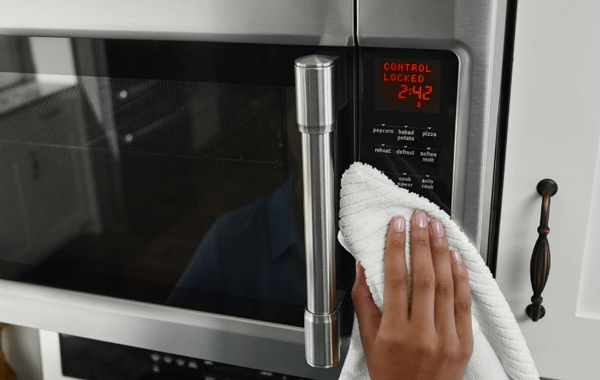
Like other appliances in your kitchen, your microwave needs regular cleaning. A study by Kimberly-Clark Professional shows just how the exterior of a microwave can be full of germs.
When you use a microwave for cooking, food leftovers are usually stuck to the bottom, top and sides of the oven.
Therefore, if you don’t clean your microwave in time, it will be swamped with germs.
Some of the germs you’re likely to find inside and outside your microwave include:
- Mildew
- Mould
- Coliform bacteria
How To Disinfect The Inside Of Your Microwave
- Mix lime or lemon with one cup of water (you can also use vinegar) in a microwave-safe bowl.
- Place the bowl inside the microwave and turn it on.
- Leave the mixture to boil until the microwave window is steamy.
- Allow the microwave to cool for about 5 minutes.
- Remove the bowl and clean the inside using a microfiber cloth.
How To Disinfect The Outside Of Your Microwave
- Pour some rubbing alcohol on a microfiber cloth.
- When the cloth is damp, use it to clean the control panel, and the handle of the microwave till it’s shiny.
Choose Alsco For All Your Restaurant Kitchen Deep Cleaning Services
A study by NSF International reveals that your kitchen could be dirtier than your bathroom. The research found coliform bacteria in:
- 32% of countertops
- 18% of cutting boards
- 45% of kitchen sinks
- Over 75% on kitchen counters.
These statistics show how dirty your restaurant kitchen can be if you don’t take necessary measures. You can maintain a high level of hygiene by sanitizing kitchen germ hot spots.
You can order kitchen deep cleaning supplies from Alsco and sanitize your restaurant kitchen without much strain. Some of these supplies include:
- Sanitizing solutions
- Cleaning protective ear
- High-quality soaps and detergents
You can also contact Alsco in New Zealand if you are looking for a sparkling-clean kitchen. One that gets you returning customers.



